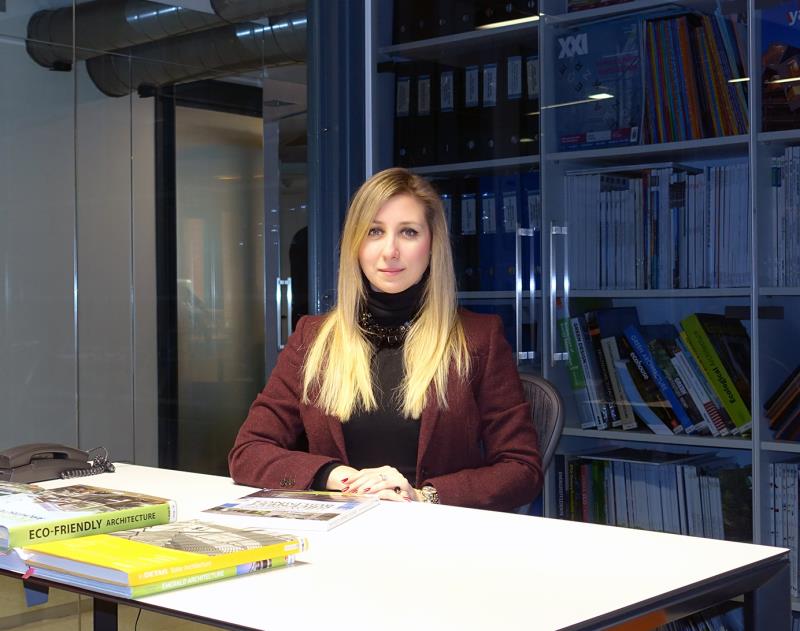
WE ARE IN DIALOGUE WITH EBRU ÜNVER
This month, we are hosting Master Architect Ebru Ünver Karaer, one of the partners of İLTAY Architecture and who has voluntarily supported ÇEDBİK studies for many years, in our “Dialogue” interviews on Lighting Design with our guests from different disciplines of the industry.
We talked about lighting design with Ebru Ünver Karaer, who has contributed to various projects such as administrative buildings, factories, residences, offices, hotels as the second generation, and especially works in the field of sustainable architecture and green buildings, in the 15-year period she spent under the roof of İLTAY Architecture with M. Architect Lütfi Ünver.
1. How does light affect your lifestyle in your life, work or home?
To express the subject from a technical point of view, light, which is the condition of visual perception, that is, the sine qua non, has a very important place with us and in our lives, not only for me, but for all space users since our existence.
By affecting the person mentally, physically and psychologically, it causes different emotions such as happy-unhappy, optimistic-pessimistic, and causes positive or negative effects such as being productive-inefficient, successful-unsuccessful in business life.
It is possible to create different appearances to the space by creating very different illuminations with light and thus to create different impressions for the user. For this reason, I say that it may be too cliché, but because we cannot live without it, light is life, it is life itself.
I also like the combination of natural light/daylight and artificial light/lamp light in all environments, home or office. It is a fact that the correct use of the mixture of natural and artificial lighting gives positive results in terms of reducing electrical energy consumption, so it contributes to the efficient use of energy.
2. Which of the following is included in your Lighting Design project/investment? Why?
• Science
• Technical
• Art
The lighting field has an interdisciplinary feature. For this reason, it should be considered as a whole of the work of different occupational groups. For example, architect, doctor, electrical-electronic-mechanical engineer, designer-aesthetics-art specialist. Therefore, in our lighting designs, we use scientific data about people, light sources and materials, which are the requirements of the lighting technique. Of course, these data are evaluated from an artistic and aesthetic point of view and our designs are shaped. In short, we can say that science, art and technique are inseparable triads, we try to give the necessary importance to these three in each of our projects.
3. Do you think Architectural Lighting Design can add value to the project?
Architectural lighting project can be described as the construction of light architecture and light design by using natural light sources or artificial light sources or both of indoor spaces. The goals here are to create visually comfortable environments suitable for the user's actions, as well as to ensure that the architectural features and details of the space can be seen. We take care to start our lighting project works at the architectural design stage. We start with questions such as what functions are performed in the space, what are the positions of the users, what are the lighting values that should be provided in the relevant standards. After answering the questions of who needs where and what kind of lighting, alternative lighting designs are realized. We can also get support from lighting designers in this regard. After the options are evaluated in terms of visual comfort, emphasis on architecture, as well as initial investment, operating costs, sustainability and energy consumption, a lighting project is created by deciding on one. So as I just said, we are trying to combine science, technique and art. When we cannot manage the process in this order, the lighting cannot add value to our architectural project, and the employers and users are not happy. So, yes, architectural lighting design adds great value to the project.
4. What do you think the process of working with the Lighting Designer contributed to you as an investor/manager?
It is clear that working with professionals specialized in lighting design will lead to faster results on issues such as the function of the space, user characteristics and actions, emphasizing the architecture, sustainability, and energy efficiency, and will ensure the establishment of an accurate and effective light architecture. As architects we are given a certain knowledge about lighting during undergraduate education. However, it is known that in the case of a master's or doctorate in lighting, knowledge will increase and experience will be gained as you practice. For this reason, I think it is possible to create more competent projects in terms of science, art and technique by working with people who have been trained in lighting and lighting offices.
